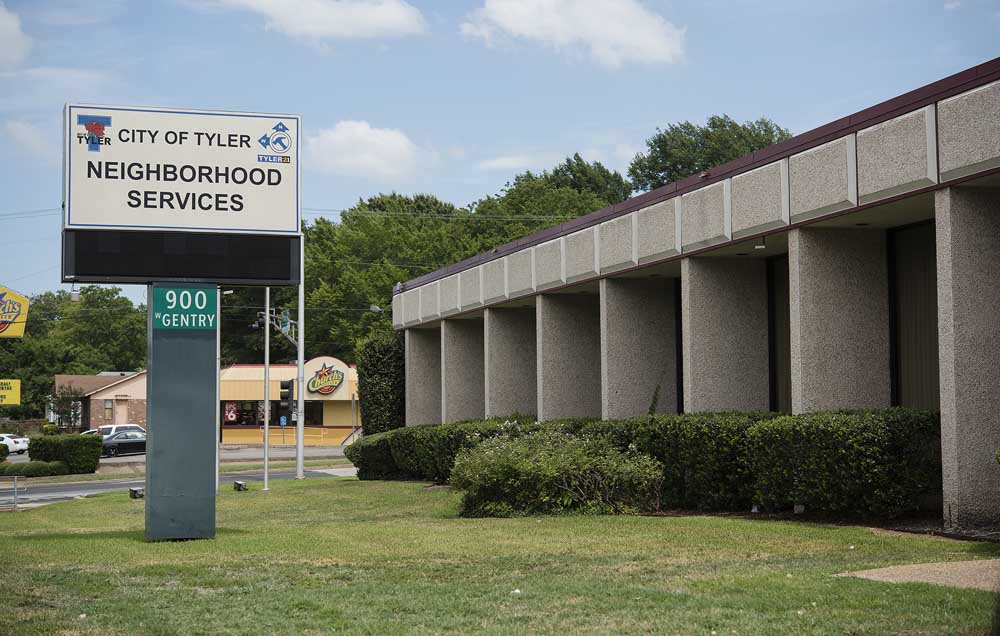For good, healthy blueberries, fertilize your crop properly
Published 7:45 am Thursday, June 14, 2018

- Greg Grant
Last week, horticultural consultant and retired Smith County horticulturist Keith Hansen and I went to visit the Tyler Blueberry Farm where we both picked more than 5 pounds of berries to take home.
I’m pretty sure Keith ate another 5 pounds while he picked, however.
Blueberries are truly an American fruit, with several species native to North America. They are relatively easy to grow when given organically enriched, well-drained, acidic soils along with full sun and high-quality water, which is low in calcium bicarbonates.
The best blueberry for Texas is the rabbiteye blueberry. A single rabbiteye blueberry plant can produce 15 pounds of berries per year. The popularity of blueberries is growing because of the fruit’s high concentration of antioxidants, which are thought to help prevent cancer and heart disease.
The quarter-century-old plants at the Tyler Blueberry Farm were large and healthy, which means they are watering and fertilizing accurately. Those big, heavy producing plants made me realize how starved for fertilizer my new young blueberry plants were at my farm.
Rabbiteye blueberry plants do not produce the root hairs that are needed to take up water and nutrients. Instead, they depend entirely on a fungus that acts as root hairs for the plant. The plant provides nourishment for the fungi, called mychorrhizae.
Rabbiteye blueberries are sensitive to excessive fertilizer and to some types of fertilizer. Instead of one high-dosage feeding, apply fertilizer several times a year at low rates. Slow-release fertilizers are preferable for this reason. Avoid fertilizers that contain nitrate forms of nitrogen, which may slow plant growth. Instead, use fertilizers with nitrogen in the form of urea or ammonium. Check the fertilizer package to determine the form of nitrogen that it contains.
For most homeowners, the easiest thing to do is purchase an azalea-camellia-garden “acidic” fertilizer with micronutrients. Since azaleas are blueberry relatives, they have the same nutritional requirements. The main difference is that blueberries need sun while azaleas need part shade. Be sure and follow the label instructions.
For commercial growers and large plantings, the most effective and most commonly used nitrogen fertilizer for blueberries is ammonium sulfate (21-0-0). Do not fertilize newly planted blueberry plants with nitrogen until the plants are well established. If the plants appear to be thriving, apply one-half to 1 ounce of 21-0-0 fertilizer per plant in the summer of the planting year. If the plants aren’t vigorous, wait until the second season to fertilize.
Beginning the second year after planting, fertilize the plants with 21-0-0 at a rate of 1 ounce per year of plant age, up to a maximum of 8 ounces per plant per year for those 8 years old or older. Broadcast the fertilizer evenly around the plant. Good times to fertilize rabbiteyes are late winter to early budbreak (the beginning of bud growth) and early summer after harvest is complete.
Complete instructions for growing rabbiteye blueberries in East Texas can be found at https://aggie-horticulture.tamu.edu/fruit-nut/files/2015/04/blueberries_2015.pdf.
If you want to see what healthy blueberries look like, the Tyler Blueberry Farm (903-526-4440) has plenty to see. You can find them on the internet at tylerblueberry.com or on Facebook at Tyler Blueberry Farms.
Greg Grant is the Smith County horticulturist for the Texas A&M AgriLife Extension Service and author of “Texas Fruit and Vegetable Gardening.” You can read his “Greg’s Ramblings” blog at arborgate.com or read his “In Greg’s Garden” in each issue of Texas Gardener magazine (texasgardener.com). More gardening information from the Texas A&M AgriLife Extension Service can be found at aggie-horticulture.tamu.edu.






